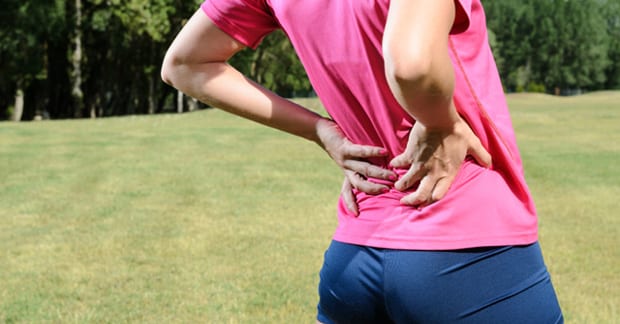Statistically, most people (estimated to be about 90%) will seek care for Low Back Pain (LBP) at some point in their lifetime. Last month, we discussed the role foot orthotics play in the management of LBP by improving balance, and it seems appropriate to discuss other ways we can improve our balance, hence the topic this month!
Balance is a skill that is learned as we develop. Initially, as infants, we have not developed the “neuromotor pathways” or sequence of signals between the brain and our toes, feet, ankles, knees, hips, and so on that allow us to move in a progressively more coordinated manner. This natural progression of developing motor control starts with crude, rather uncontrolled movement of the fingers, hands, arms, legs, and feet, and soon, we learn to hold up our head, scoot, roll over, crawl, stand, and eventually walk (usually during the first 12 months of life). This bombardment of sensory information to the brain leads to the ability to gradually perform highly integrated functions including walking, running, jumping, and dancing. As part of that learning process, falling frequently occurs. We all recall the challenges of learning how to ride a bike, swim, do a somersault, climb a tree, swing, dance, do gymnastics, ski, and on and on. As time passes and we enter middle age, we become more sedentary. As a result, we start losing our “proprioceptive edge” and become less steady, leading to more frequent balance loss and falls. Eventually, we have to hold on to hand railings or the wall in order to keep our balance and falling occurs more frequently. Couple this gradual loss of balance with bone demineralization (osteoporosis) and the risk of a fracture, such as a hip or vertebra, increases as well.
So the question arises, what can we do to slow down this process and maybe even reverse it? The answer is, A LOT!!! Just like muscles shrink and atrophy if they are not used, so does our ability to maintain our balance. We have to keep challenging our balance in order to keep those neuromotor pathways open. That need doesn’t stop after childhood, and in fact, becomes more important as we age. Last month, we talked about the “normal” length of time people can stand on one foot with the eyes open verses closed. If you tried the test, do you remember the steadiness difference? This “test” can be used at various time intervals, such as once a month, as you add balance challenging exercises to your daily routine. Frequently, people will find that within the first 2-4 weeks, they will feel more “sure” or secure on their feet, and even may not feel the need for a cane, or they’ll reach out less often for a hand rail. Start with simple exercises like standing with your feet together and hold that position for progressively longer times (eyes open and closed). We will continue this discussion next month with more balance stimulating exercises…
Thousands of Doctors of Chiropractic across the United States and Canada have taken "The ChiroTrust Pledge":
“To the best of my ability, I agree to
provide my patients convenient, affordable,
and mainstream Chiropractic care.
I will not use unnecessary long-term
treatment plans and/or therapies.”
To locate a Doctor of Chiropractic who has taken The ChiroTrust Pledge, google "The ChiroTrust Pledge" and the name of a town in quotes.
(example: "ChiroTrust Pledge" "Olympia, WA")
Content Courtesy of Chiro-Trust.org. All Rights Reserved.

